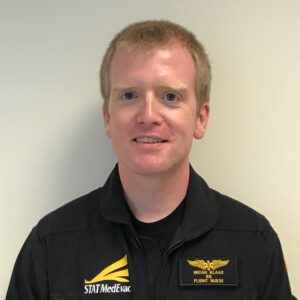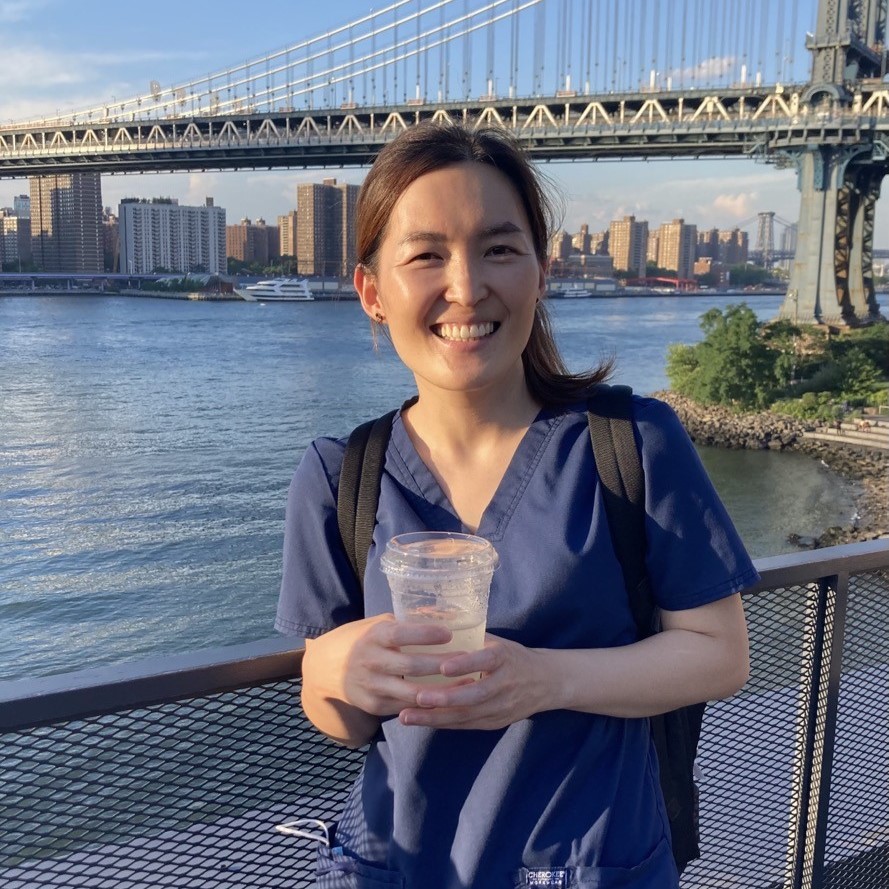
Vascular access can be a highwire act wherever it takes place, but performing it while traveling via helicopter introduces new complications: limited resources at rural facilities, maintaining patency while moving in and out of an aircraft, lines dislodging, inclement weather, the unpredictability of requests, back-to-back flights, overnight flights, to name a few.
This may scare some clinicians away. However, others, like Micah Klaas, VA-BC™, BSN, PHRN, CFRN, NRP, see it as an exciting opportunity.
“I love the autonomy of the job,” Klaas said in an interview with VACC. “It is a perfect combination of nursing and EMS. I get to operate at the top of both scopes of practice and often without having to ask for permission first.”
The first time he saw a helicopter land, he knew that’s what he wanted to do for his career. Back then, he was still an EMT in high school.
Now, he is a Senior Professional Flight Nurse II with STAT MedEvac, a subsidiary of the University of Pittsburgh Medical Center. Although, the path to get there was not always a simple one.
In 2018, after applying for over a year, he was only offered a per diem flight nurse role. He put in 24-48 hours a week on the helicopter, meanwhile he still had to work a full-time job in an ICU.
It was in that local community hospital where he cut his teeth and really fell in love with vascular access. Prior, he had only received about an hour of vascular access training.
“As I went along and gained more knowledge, I realized that vascular access fascinated me,” Klaas said.
He taught himself along the way.
“I quickly realized that there were a lot of ways in which nursing was doing a disservice to our patients in this regard and that I could do something about it,” Klaas said.
He dove headfirst into the specialty.
“I began to learn everything I could to do the right thing for the patient the first time,” Klaas said.
He learned vascular access is a lot more than just line placement.
“That’s a part of the process, but it’s really short-sighted to only focus on one part of the puzzle,” Klaas said. “There is a lot that comes before and after the actual line insertion itself.”
It was around this time when he became VA-BC certified. He had recently been credentialed to insert ultrasound-guided IV’s and was in the process of being trained to insert midline catheters as part of a pilot program. Then, he was asked to begin developing policies and procedures for midline and US guided peripheral IV’s.
“It was the right time to take the exam and show that I was competent in what I was doing and saying,” Klaas said.
Klaas encourages any clinician to get VA-BC certified, regardless of if they are on a vascular access team.
“Being certified gives credence to you as a professional and acknowledges your commitment to your respective field,” Klaas said.
He believes it’s important for every hospital to have its own vascular access team.
“Vascular access is a common procedure in the hospital, but there’s a lot of data that says we aren’t great at it,” Klaas said. “Vascular access teams can bridge that gap and help to ensure that patients are getting the right access by the correct professional the first time. This isn’t to say that only the vascular teams should be placing lines.”
Lindsay Gray, RN, had the opportunity to work with him during his tenure in this ICU.
“Micah Klaas’s vascular access experience is above reproach,” Gray said. “This is significantly impacted by the fact that Micah approaches any endeavor with a level of integrity and drive that genuinely motivates anyone he’s around. I can say that by proxy I was a better practitioner by merely working with Micah not only for his knowledge but also for his skillset he easily imparted upon his coworkers.”
He witnessed vascular access transform: “A lot more emphasis on using assistive devices (ultrasound, fluoroscopy, infrared, etc.), more vascular access team utilization, slowly moving away from multiple, multiple attempts at access before consulting another specialty, insertion of the right line the first time.”
After pulling double duty for 18 months, both at the ICU and odd hours on the helicopter, a full-time position as a flight nurse finally opened for him.
“I am motivated to train up the next generation of EMS personnel to ensure that the field continues to expand and gain the respect of other medical specialties,” Klaas said.
These days, Klaas, now 34, spends much of his free time outdoors with his wife and two sons.
“My baseline motivation is carrying on the legacy of service to others (as cliché as that sounds) that previous generations of family members started while instilling the same into my own children,” Klaas said.
Early in his career, a mentor advised him to pursue the flight career through nursing instead of becoming a paramedic.
“A nurse has a lot more options for the latter end of the career when it might not be as exciting or possible to work all hours of the day and night and jump in and out of transport vehicles,” Klaas said.
As for the future, the sky is the limit.
“I often say that I’m not sure what I want to be when I grow up.”


